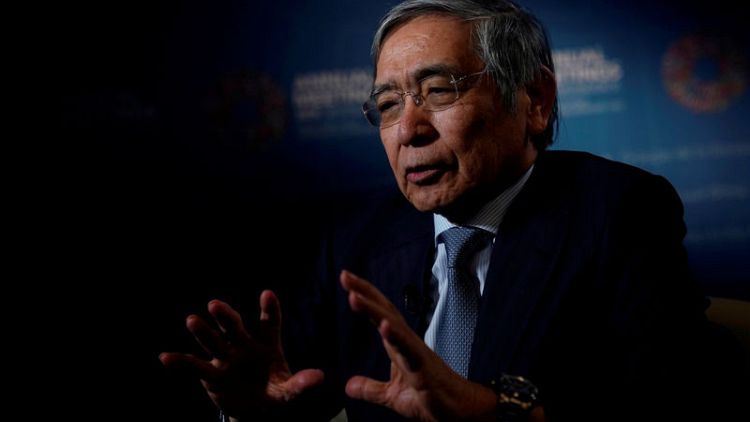By Leika Kihara
TOKYO (Reuters) - Bank of Japan board members debated the feasibility of ramping up stimulus at their September rate review, with some calling for the need to start brainstorming ideas to top up monetary support, minutes of the meeting showed on Wednesday.
Underscoring a lingering rift within the nine-member board on the next step, however, some members warned that more attention was needed on the demerits of prolonged ultra-low interest rates such as the impact on bank profits.
"A comprehensive examination was needed on the chance that financial institutions' profitability will decline further, and an increasing number of them would take excessive risks," the minutes quoted some members as saying.
At the September meeting, the BOJ kept policy steady but signalled the chance of near-term easing by issuing a stronger warning against overseas risks. It held off on expanding stimulus at a subsequent rate review in October.
Despite the decision to keep policy steady, many on the board voiced concern over the fallout from Sino-U.S. trade tensions and slumping global demand, the minutes showed.
"There's a risk a delay in pick-up of overseas growth could hurt Japan's economy and prices. As such, the BOJ must start examining a desirable policy response, with an eye on the potential side effects," one member was quoted as saying.
Another member also said the BOJ must consider "all possible policy measures without preconception" as the economy could already be losing momentum towards reaching the central bank's inflation target of 2%, the minutes showed.
One board member was more explicit regarding what the most effective means of easing could be. "There was relatively large room for monetary easing among yields in the short- to medium-term zone, and lowering the short-term policy interest rate was deemed appropriate," the member was quoted as saying.
Under a policy dubbed yield curve control, the BOJ pledges to guide short-term rates at -0.1% and the 10-year government bond yield around 0%.
The BOJ is in a bind. Years of heavy money printing has failed to fire up inflation, forcing the central bank to maintain a massive stimulus despite rising costs, such as the hit of near-zero rates on financial institutions.
Slowing global growth and trade tensions also cloud the outlook for Japan's economy, adding to the dilemma for policymakers relying on a dwindling tool-kit.
(Reporting by Leika Kihara; Editing by Chang-Ran Kim)



